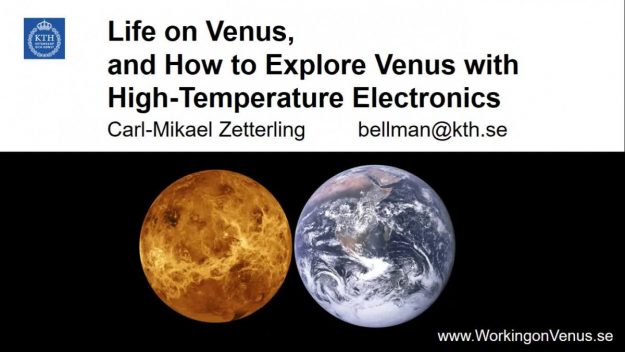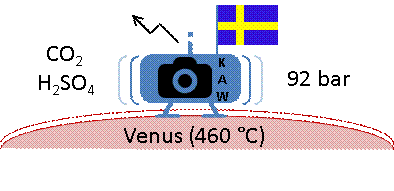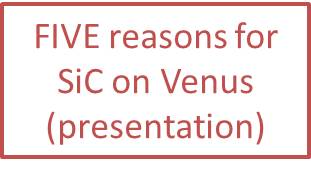The Radio We Could Send to Hell (IEEE Spectrum, May 2021)
Silicon carbide radio circuits can take the volcanic heat of Venus
Life on Venus, and How to Explore Venus with High-Temperature Electronics
IEEE ED Seminar 2020-10-01, Carl-Mikael Zetterling. Slides from presentation (16 MB)
 Press Image to start recorded presentation (52 min)
Press Image to start recorded presentation (52 min)
Working on Venus brief project description (March 2016)
Recent PhD theses from KTH in the project:
May 3 Shuoben Huo – Silicon Carbide High Temperature Photodetectors and Image Sensor
http://urn.kb.se/resolve?urn=urn:nbn:se:kth:diva-248426
May 24 Mattias Ekström – SiC CMOS and memory devices for high-temperature integrated circuits
http://urn.kb.se/resolve?urn=urn:nbn:se:kth:diva-250276
May 29 Muhammad Waqar Hussain – High-Temperature Radio Circuits in Silicon Carbide Bipolar Technology
http://urn.kb.se/resolve?urn=urn:nbn:se:kth:diva-249972
June 14 Muhammad Shakir – Process Design Kit and High-Temperature Digital ASICs in Silicon Carbide
http://urn.kb.se/resolve?urn=urn:nbn:se:kth:diva-251766
The entire thesis and included articles can be downloaded from these links.
FIVE reasons for SiC on Venus
- There are still things to be discovered about our nearest planet, even after 44 spacecraft sent to Venus since 1961.
- The USSR Venera landers could only work for about two hours due to the surface temperature of 460 °C.
- The NASA Magellan and ESA Venus Express collected data from orbit.
- To determine if there is volcanic activity, which is needed for better climate modeling both for Venus and Earth, an in-situ mission is needed to last for more than 2 hours.
For more details see the presentation below.


